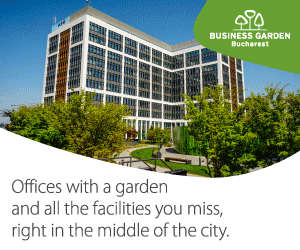:quality(80)/business-review.eu/wp-content/uploads/2021/03/Simina-Niculita_Colliers-International.jpg)
With a total modern retail stock of around 4 million square meters, the Romanian retail segment saw one of its toughest years in 2020 since the financial recession back in 2009-2010. However, money continued to flow in the economy and non-food retail sales saw a fast V-shaped recovery although we noticed some major changes in spending patterns like the shift towards online shopping and consumers’ preference for sport goods, homeware or items aimed at improving living standards, including home renovations and white goods, at the expense of articles like clothing, shows the 2020 annual report released by Colliers. The pandemic also validated the thesis we mentioned a couple of years ago, that any town in Romania upwards of 30,000 inhabitants ought to eventually have a modern retail scheme.
2020 saw the delivery of around 142,400 square meters of new modern retail spaces, a bit over half of the announced delivery of about 250,000 square meters, as the pandemic caused delays in building and rental activities and prompted developers to take a more cautious approach. The bulk of deliveries came from 3 malls: the AFI-developed scheme in Brasov (45,000 sqm), NEPI Rockcastle’s Shopping City Targu Mures (40,000 sqm) and Prime Kapital’s Dambovita Mall in Targoviste (33,000 sqm).
Colliers consultants observed a significant increase in consumer activity in e-sales, as tracked by the statistical bodies, by 35% in 2020 versus 5% increase in total non-food retail sales, which has become a fundamental element of the ongoing transformation of the retail sector, related to the development of technology and changes in consumer behavior. A positive aspect is that consumers have remained rather robust during this economic downturn, as job losses were several times smaller than after the 2009-2010 recession (below 100,000 net jobs lost this time versus close to 700,000 back then), while wage growth remained, on average, in the black.
Isolated in houses, many Romanians started renovating, but a significant part of spending could not be captured by brick and-mortar retailers. As in any economic downturn, low prices tend to attract more people, hence discounters have had very good results (some growing their business by double-digits amid growing their network), while the mass-market fashion segment has generally seen similar results to those in 2019.
Other segments saw quite poor results, like middle upper and upscale fashion and shoes retailers (including office and evening wear), which tend to have a significant share in terms of gross leasable areas in shopping centers. Some good months – like September – cannot make up for an overly poor year. Thankfully, December, which makes up for around 15-20% of a retailer’s full year revenue, showed non-food sales up by close to 7% over a year ago.
“We believe that an established fashion brand, for instance, could more than leverage its position and might be able to promote attractive multi-channel sales opportunities, like BOPIS models (buy online pick-up in store). In fact, more traditional brick-and-mortar players that became e-sellers have chipped away at the market share of the pure online stores. Dominant shopping centers will likely retain their destination status, further reinforced by flagship stores and big retailers (including BOPIS). This means that the middle ground may end up suffering the most: non-dominant shopping centers in competitive towns, retailers with limited financial power to support expanding adequately the e-sales channel. Some may end up exiting Romania or selling their local business down the line, in the next few years”, explains Simina Niculiță, Partner & Head of Retail Agency at Colliers.
In terms of rents and vacancy, landlords are feeling the double pinch of both smaller rents, with base rent cuts in the 15-20% region mostly amid added rent-free months, and as much as 30% in some special cases, and higher vacancy, with some large shopping centers seeing this creep up towards higher single digits. It is quite a departure from the pre-2020 situation, when some malls had waiting lists for tenants and limited to no free spaces.
Colliers consultants note that impulse buying has been drastically reduced, while at the same time, shopping sessions have become shorter, less frequent, but with bigger overall tickets in some cases.
“In the longer run, we believe that several categories of market participants, landlords or tenants, stand out to emerge as winners: those with a dominant/ significant market share, who can leverage their position accordingly, proximity-based retailers/ schemes, notably in emerging residential areas and small-/medium-sized schemes, particularly retail parks in towns with low coverage of modern retail schemes”, says Simina Niculiță.
Over 80% of the new retail spaces expected in 2021 will be in the form of retail parks, including smaller strip malls, highlighting a market shift towards proximity-based schemes or those with a smaller financial footprint for the developer. This year, the total gross leasable area announced is up to over 150,000 square meters of new modern retail spaces, with the bulk of these coming from just two developers the Prime Kapital/ MAS REI joint venture – nearly 53,000 square meters from 3 new schemes (in Ploiești, Sfântu Gheorghe and Bârlad) and Mitiska – close to 25,000 square meters in 4 new schemes (in Baia Mare, Tulcea, Mediaș and Slatina).
A noteworthy addition this year will be for Bucharest – one of the largest deliveries in the Capital in the recent years, with the expansion of the Colosseum Retail Park by over 16,000 square meters. Another novelty is the entry of a new player, Polish developer Scallier, which has secured several land plots throughout the country and promises 40,000 square meters of new retail spaces by 2022, and part of these are slated to come in 2021.
“That said, amid a fairly low per capita stock of retail spaces in Romania (one third below Poland’s for example), negative events like the ones we have been through in 2020 should be absorbed by the market and the subsequent growth should lead to a swift recovery of losses – profitability of local retailers is several times higher than that of the EU average, as per Eurostat figures. By the turn of this decade we could be moving to a total modern retail stock of past 5.5 million square meters, which would still likely be lower on a per capita basis than what some regional peers have”, concludes Simina Niculiță, Partner & Head of Retail Agency at Colliers.
Looking at the longer term outlook, we see that the vast majority of the new schemes expected this decade will be in towns with limited retail presence or in new suburbs of large cities where the catchment areas are significant and relevant in terms of consumption power. Omnichannel sales will make or break a retailer’s position in the coming years, as the integration of personal preferences and added flexibility will push forward a mix of offline-online commerce. A change in generations could also define a lot of things: generation Z, which consists of the first individuals truly raised in the digital world and with a more conscious attitude towards consumerism and ecology or spending ethically, will be more relevant as consumers. We would also look for Romania’s wages to continue climbing much faster than the EU average in the next decade, which would likely lead to both higher consumption and to an increased predilection for upscale goods, to close in on 90% of EU average from below 80% currently.



:quality(80)/business-review.eu/wp-content/uploads/2024/03/Screenshot-2024-03-26-at-11.33.42 AM.png)




:quality(80)/business-review.eu/wp-content/uploads/2024/02/IMG_6951.jpg)

:quality(80)/business-review.eu/wp-content/uploads/2024/04/COVER-1.jpg)



:quality(50)/business-review.eu/wp-content/uploads/2024/03/Stefania-Baldovinescu_Colliers.jpg)
:quality(50)/business-review.eu/wp-content/uploads/2021/07/Gabriel-Blanita_Colliers.jpg)
:quality(50)/business-review.eu/wp-content/uploads/2024/02/Small_NEAN4624-e1708447374421.jpg)
:quality(80)/business-review.eu/wp-content/uploads/2024/04/cover-april.jpg)
:quality(50)/business-review.eu/wp-content/uploads/2024/04/Slide1.png)
:quality(50)/business-review.eu/wp-content/uploads/2024/04/1_Transport.jpg)
:quality(50)/business-review.eu/wp-content/uploads/2024/04/0x0-Supercharger_18-scaled.jpg)